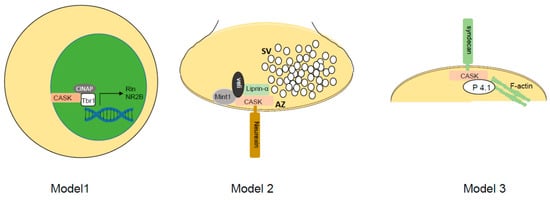Molecular and Behavior Relationship in Gene-Manipulated Model Organisms
A topical collection in Cells (ISSN 2073-4409). This collection belongs to the section "Cellular Neuroscience".
Viewed by 21590Editor
Topical Collection Information
Dear Colleagues,
Neuropsychiatric disorders, such as autism, epilepsy, schizophrenia, and Alzheimer’s disease, are primarily associated with a genetic predisposition. Over the past two decades, human genetic studies have identified candidate genes for the pathogenesis of these disorders. Behavioral studies using genetically modified animal models are widely used to verify the causal relationship between human mutations and disorders. Mice have been predominantly used as genetically modified disease models due to the ability of gene targeting in ES cells. In recent years, advances in genome editing technology have allowed recapitulating human mutations in various species, including worms, flies, fishes, rodents, and monkeys, and this enables us to study the large-scale collective behavior or higher cognitive functions. Viral-mediated region-specific gene manipulation also broadens the application of behavioral studies in various model organisms. In parallel, a wide variety of methods for behavioral studies combined with modern computer programming, such as machine learning, have also been established.
In this research topic, we invite original research articles or reviews related to behavioral studies using gene-manipulated model organisms. Research that is not directly related to diseases is also welcomed. We aim to share current advances and innovations in the research field.
Prof. Dr. Katsuhiko Tabuchi
Collection Editor
Manuscript Submission Information
Manuscripts should be submitted online at www.mdpi.com by registering and logging in to this website. Once you are registered, click here to go to the submission form. Manuscripts can be submitted until the deadline. All submissions that pass pre-check are peer-reviewed. Accepted papers will be published continuously in the journal (as soon as accepted) and will be listed together on the collection website. Research articles, review articles as well as short communications are invited. For planned papers, a title and short abstract (about 250 words) can be sent to the Editorial Office for assessment.
Submitted manuscripts should not have been published previously, nor be under consideration for publication elsewhere (except conference proceedings papers). All manuscripts are thoroughly refereed through a single-blind peer-review process. A guide for authors and other relevant information for submission of manuscripts is available on the Instructions for Authors page. Cells is an international peer-reviewed open access semimonthly journal published by MDPI.
Please visit the Instructions for Authors page before submitting a manuscript. The Article Processing Charge (APC) for publication in this open access journal is 2700 CHF (Swiss Francs). Submitted papers should be well formatted and use good English. Authors may use MDPI's English editing service prior to publication or during author revisions.
Keywords
- model organism
- behavior
- genome editing
- neuropsychiatric disorders
- CRISPR/Cas9











